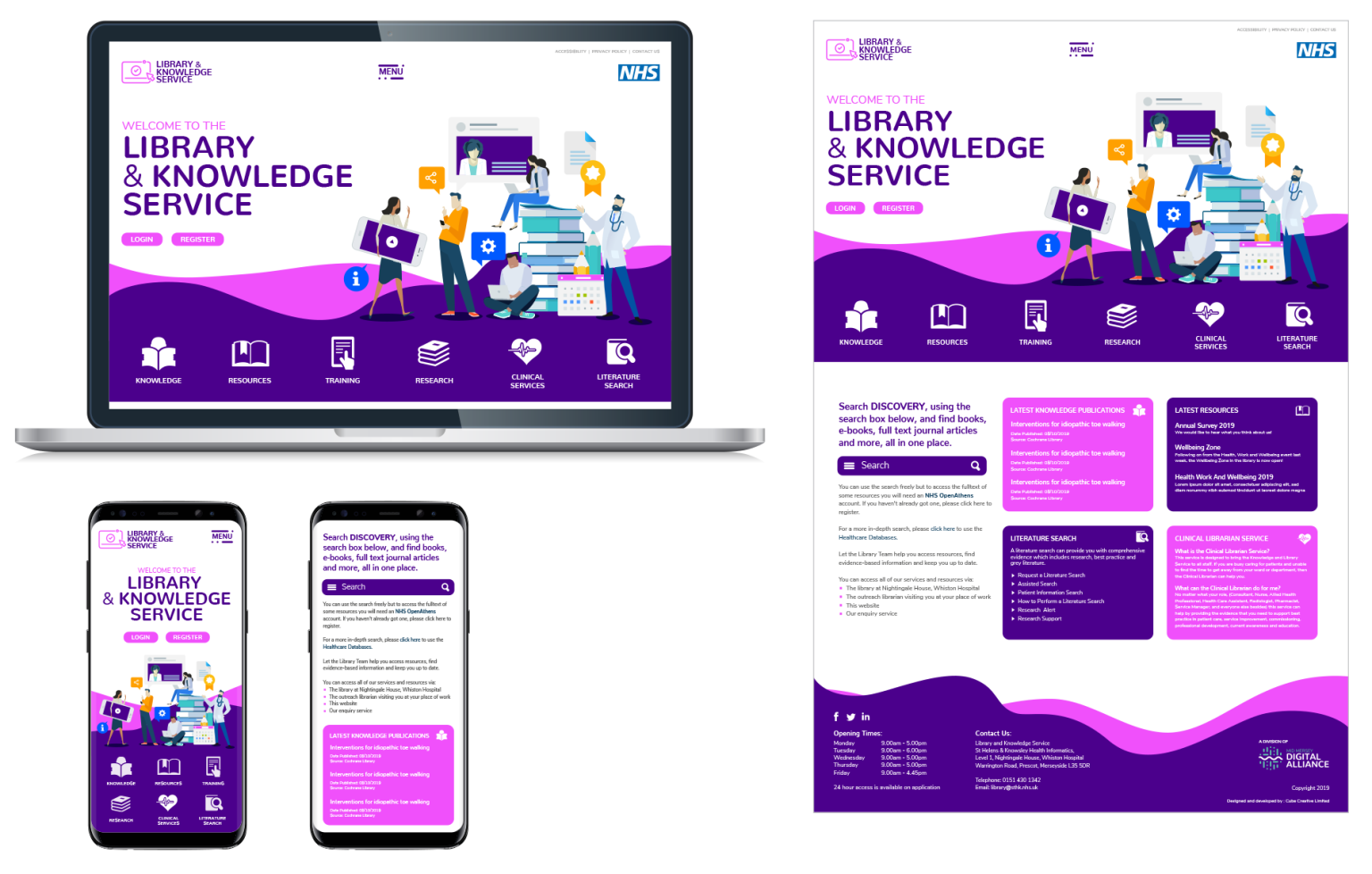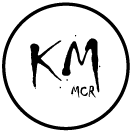During my time at Cube Creative, I had the opportunity to take on an exciting project: designing and developing the brand and website for St Helens and Knowsley Health Informatics Library Services, an important NHS organization.
This endeavor involved extensive collaboration with stakeholders, conducting various meetings, focus groups, and in-depth conversations with the client. Together, we aimed to create a visually appealing and user-friendly platform that would effectively serve the needs of healthcare professionals and researchers.
After careful consideration and numerous iterations, the chosen design for the St Helens and Knowsley Health Informatics Library Services website can be viewed at the following link: https://www.knowledge-nw.nhs.uk/. Let’s delve into the details of the design and development process, highlighting the key elements and considerations that went into creating this successful outcome.
Brand Identity: One of the primary objectives was to establish a strong brand identity that reflected the values and purpose of the organization. Through close collaboration with the client and understanding their vision, we crafted a brand identity that conveys professionalism, reliability, and trustworthiness. The logo, color scheme, and typography were meticulously chosen to create a cohesive and memorable brand image.
Website Design: The website design aimed to strike a balance between aesthetics and functionality. Understanding the diverse range of users, including healthcare professionals, researchers, and students, we created an intuitive and user-friendly interface. Extensive user experience (UX) research and testing were conducted to ensure that the design catered to the specific needs of the target audience. The website featured a clean and modern layout, with clear navigation, intuitive information architecture, and prominent calls to action.
Information Architecture: Given the vast amount of information and resources that the library services offered, organizing the content effectively was crucial. We collaborated closely with the stakeholders to create a well-structured information architecture, ensuring that users could easily navigate and find the information they were seeking. The website incorporated various categories, sections, and filters to facilitate efficient information retrieval.
Content Management System (CMS): To empower the client with the ability to manage and update the website easily, we implemented a robust and user-friendly content management system. This allowed the client to add, edit, and publish content, ensuring that the website remained up to date with the latest resources and information. The CMS also provided the flexibility to expand the website’s functionalities in the future, accommodating the evolving needs of the organization.
Responsive Design: Recognizing the increasing prevalence of mobile devices, we adopted a responsive design approach. The website was optimized to deliver a seamless user experience across different screen sizes and devices, including smartphones, tablets, and desktop computers. This ensured that healthcare professionals and researchers could access the library services on the go, without any loss of functionality or readability.
Accessibility and Compliance: Compliance with accessibility guidelines and industry standards was a top priority throughout the design and development process. We followed best practices to ensure the website adhered to accessibility standards, enabling users with disabilities to access and interact with the content effectively. Compliance with data protection and privacy regulations, such as GDPR, was also meticulously implemented to safeguard user information.

